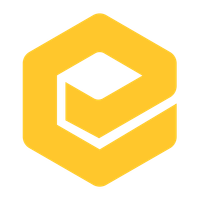
Epiroc AB
STO:EPI A


| US |

|
Johnson & Johnson
NYSE:JNJ
|
Pharmaceuticals
|
| US |

|
Berkshire Hathaway Inc
NYSE:BRK.A
|
Financial Services
|
| US |

|
Bank of America Corp
NYSE:BAC
|
Banking
|
| US |

|
Mastercard Inc
NYSE:MA
|
Technology
|
| US |

|
UnitedHealth Group Inc
NYSE:UNH
|
Health Care
|
| US |

|
Exxon Mobil Corp
NYSE:XOM
|
Energy
|
| US |

|
Pfizer Inc
NYSE:PFE
|
Pharmaceuticals
|
| US |

|
Palantir Technologies Inc
NYSE:PLTR
|
Technology
|
| US |

|
Nike Inc
NYSE:NKE
|
Textiles, Apparel & Luxury Goods
|
| US |

|
Visa Inc
NYSE:V
|
Technology
|
| CN |

|
Alibaba Group Holding Ltd
NYSE:BABA
|
Retail
|
| US |

|
3M Co
NYSE:MMM
|
Industrial Conglomerates
|
| US |

|
JPMorgan Chase & Co
NYSE:JPM
|
Banking
|
| US |

|
Coca-Cola Co
NYSE:KO
|
Beverages
|
| US |

|
Walmart Inc
NYSE:WMT
|
Retail
|
| US |

|
Verizon Communications Inc
NYSE:VZ
|
Telecommunication
|
Utilize notes to systematically review your investment decisions. By reflecting on past outcomes, you can discern effective strategies and identify those that underperformed. This continuous feedback loop enables you to adapt and refine your approach, optimizing for future success.
Each note serves as a learning point, offering insights into your decision-making processes. Over time, you'll accumulate a personalized database of knowledge, enhancing your ability to make informed decisions quickly and effectively.
With a comprehensive record of your investment history at your fingertips, you can compare current opportunities against past experiences. This not only bolsters your confidence but also ensures that each decision is grounded in a well-documented rationale.
Do you really want to delete this note?
This action cannot be undone.

| 52 Week Range |
180.8991
232.1
|
| Price Target |
|
We'll email you a reminder when the closing price reaches SEK.
Choose the stock you wish to monitor with a price alert.

|
Johnson & Johnson
NYSE:JNJ
|
US |

|
Berkshire Hathaway Inc
NYSE:BRK.A
|
US |

|
Bank of America Corp
NYSE:BAC
|
US |

|
Mastercard Inc
NYSE:MA
|
US |

|
UnitedHealth Group Inc
NYSE:UNH
|
US |

|
Exxon Mobil Corp
NYSE:XOM
|
US |

|
Pfizer Inc
NYSE:PFE
|
US |

|
Palantir Technologies Inc
NYSE:PLTR
|
US |

|
Nike Inc
NYSE:NKE
|
US |

|
Visa Inc
NYSE:V
|
US |

|
Alibaba Group Holding Ltd
NYSE:BABA
|
CN |

|
3M Co
NYSE:MMM
|
US |

|
JPMorgan Chase & Co
NYSE:JPM
|
US |

|
Coca-Cola Co
NYSE:KO
|
US |

|
Walmart Inc
NYSE:WMT
|
US |

|
Verizon Communications Inc
NYSE:VZ
|
US |
This alert will be permanently deleted.
 Epiroc AB
Epiroc AB
Epiroc AB
Investor Relations
In the ever-evolving industrial landscape, Epiroc AB stands as a formidable force, seamlessly blending tradition with rapid innovation. This Swedish company, initially a part of the Atlas Copco Group, embarked on its independent journey in 2018. Epiroc has carved out a niche by specializing in a range of mining and infrastructure equipment. Its core operations pivot around the production of machinery and tools that perform critical functions in the mining, construction, and natural resources extraction sectors. By providing state-of-the-art drills, rock excavation equipment, and machinery for underground applications, Epiroc ensures that its clients receive not just products but comprehensive solutions tailored to boost productivity and safety in challenging environments.
The lifeline of Epiroc's business lies in its aftermarkets offerings, which are as advanced as its machinery. Spare parts, maintenance services, and innovative digital solutions create ongoing value for customers, providing both stability and recurring revenue streams for the company. This diversified approach enables Epiroc to maintain robust customer relationships while fostering long-term ecological and economic sustainability. By continuously investing in digitalization and automation, Epiroc adapts to the dynamic demands of its industries. Its commitment to innovation not only strengthens its foothold in the market but also propels Epiroc toward creating more efficient, environmentally conscious solutions, ultimately sustaining its competitive edge in the global landscape.

In the ever-evolving industrial landscape, Epiroc AB stands as a formidable force, seamlessly blending tradition with rapid innovation. This Swedish company, initially a part of the Atlas Copco Group, embarked on its independent journey in 2018. Epiroc has carved out a niche by specializing in a range of mining and infrastructure equipment. Its core operations pivot around the production of machinery and tools that perform critical functions in the mining, construction, and natural resources extraction sectors. By providing state-of-the-art drills, rock excavation equipment, and machinery for underground applications, Epiroc ensures that its clients receive not just products but comprehensive solutions tailored to boost productivity and safety in challenging environments.
The lifeline of Epiroc's business lies in its aftermarkets offerings, which are as advanced as its machinery. Spare parts, maintenance services, and innovative digital solutions create ongoing value for customers, providing both stability and recurring revenue streams for the company. This diversified approach enables Epiroc to maintain robust customer relationships while fostering long-term ecological and economic sustainability. By continuously investing in digitalization and automation, Epiroc adapts to the dynamic demands of its industries. Its commitment to innovation not only strengthens its foothold in the market but also propels Epiroc toward creating more efficient, environmentally conscious solutions, ultimately sustaining its competitive edge in the global landscape.





























 You don't have any saved screeners yet
You don't have any saved screeners yet
